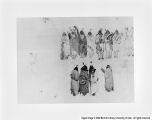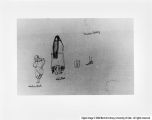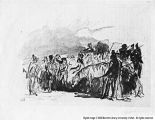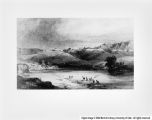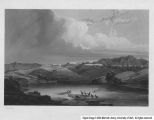| OCR Text |
Show 63 Bodmer's watercolor portrait of Ahschupssa Masihichsi as a reference, the detailed and faithful rendering of this figure, so evident in Vogel's Scalp Dance, is lacking.3 Travellers Meeting is one of the few aquatints for Travels which lack the photographic realism seen in most of Bodmer's work. Two reasons for this come to mind. The individual styles of the different etchers must be considered. It is the photographic accuracy of reproducing Bodmer's watercolors that gives Vogel's Scalp Dance its documentary interest. Manceau's interpretive Travellers Meeting is more painterly and there is less attention to detail than is generally observed in Vogel's work.^ It must be asked whether Bodmer was aware of the differences in these two styles and, in the case of these two reproductions of Ahschupsa Masihichsi, whether he might not have used these differences to achieve certain aims. The scene recorded in Travellers Meeting differs from that of Scalp Dance. The precise event depicted in Vignette 26 never occurred. As described by Maximilian in his journal entry of June 18, 1833, the arrival at Fort Clark consisted of not one, but a series of encounters and greetings, as Maximilian and Bodmer disembarked from the steamboat and walked up to the fort.5 Therefore, it must be considered whether Bodmer, who knew the image needed for the vignette was invented, did not insist on the photographic realism generally evident for "true" incidents, but allowed Manceau more freedom in interpreting this event. |
















































